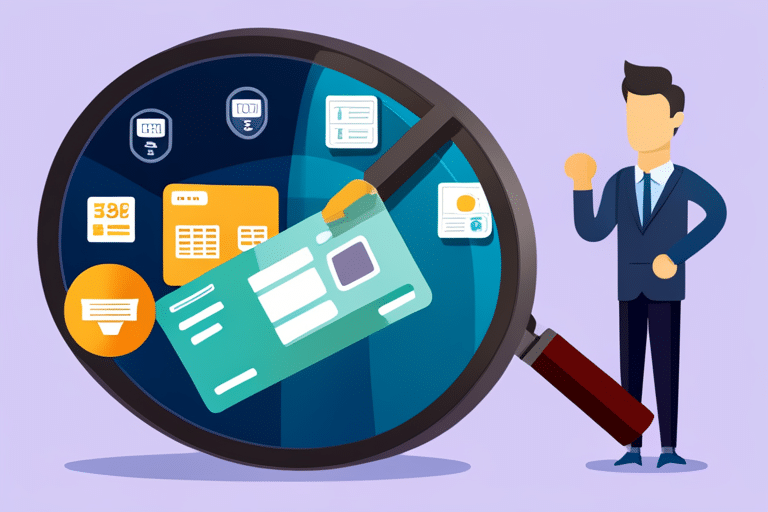Imagine you hold a delicate balance beam, teetering between the weight of your credit card debt and the desire for financial freedom.
In this comprehensive guide, we will take you on a journey through the intricate world of credit card balance transfers.
Discover how these transfers can be your secret weapon in conquering debt.
Learn how to navigate the treacherous waters of fees and interest rates, while safeguarding your precious credit score.
Get ready to master the art of balance and reclaim your financial stability.
Key Takeaways
- Balance transfers can be beneficial for saving money and paying off debt faster, regardless of credit score.
- It is important to understand the basics of balance transfers, including potential costs and factors lenders consider for eligibility.
- Comparing different credit card options, introductory offers, APRs, and balance transfer fees is crucial for finding the best balance transfer offers.
- Before initiating a balance transfer, assess your financial situation, evaluate income and expenses, create a budget, and realistically assess affordability of fees and interest rates.
How Credit Card Balance Transfers Work

If you want to understand how credit card balance transfers work, you’ll need to know the basics of transferring a balance from one credit card to another. It’s like giving your old credit card a break and letting a new one take over.
But why would you do that? Well, there are plenty of balance transfer benefits waiting for you! First, it can help you save money by consolidating your debts onto one card with a lower interest rate. Second, it gives you the opportunity to pay off your debt faster without those pesky high interest charges.
Now, let’s clear up some common misconceptions. Balance transfers are not just for people with bad credit; anyone can take advantage of them! And no, it won’t automatically hurt your credit score either.
Understanding Balance Transfer Fees

To fully understand balance transfer fees, you should be aware of the potential costs involved. While balance transfers can help you save money by consolidating your credit card debt onto a single card with a lower interest rate, it’s important to consider the fees associated with this process.
Assessing your balance transfer eligibility is crucial before making any decisions. Some factors that lenders consider include your credit score, income, and existing debt. By evaluating these criteria, you can determine if you qualify for a balance transfer and avoid wasting time and effort.
Once you’ve been approved for a balance transfer, it’s essential to focus on reducing those pesky fees. One effective way to do this is by comparing different credit card offers and selecting one with low or no balance transfer fees. This simple step can save you a significant amount of money in the long run.
In summary, understanding balance transfer fees requires careful consideration of potential costs and assessing your eligibility. By taking proactive steps to reduce these fees, you can make the most out of your credit card balance transfers and achieve financial freedom sooner.
| Assess Balance Transfer Eligibility | Reducing Balance Transfer Fees | Saving Money |
|---|---|---|
| Check Credit Score | Compare Offers | Consolidate Debt |
| Evaluate Income | Negotiate Fees | Lower Interest Rate |
| Analyze Existing Debt | Research Lenders | Minimize Charges |
Finding the Best Balance Transfer Offers

When searching for the best balance transfer offers, it’s important to compare different credit card options and select one that suits your needs. Don’t be fooled by flashy ads or promises of zero interest rates.
Take the time to carefully analyze the introductory offers from various credit card companies. Look for low or zero percent APRs, long promotional periods, and favorable terms. Be aware of any balance transfer fees that may apply and calculate if it’s worth the cost.
Remember, not all offers are created equal, so don’t fall into the trap of scams that promise too good to be true deals. Read reviews, do your research, and choose a reputable company with a solid track record.
Steps to Take Before Initiating a Balance Transfer

So, you’re considering a balance transfer to help manage your credit card debt?
Before diving into the world of balance transfer offers, it’s important to first assess your financial situation. Take a closer look at your income, expenses, and overall debt to determine if a balance transfer is the right move for you.
Once you have a clear understanding of where you stand financially, it’s time to roll up your sleeves and start researching the best balance transfer offers that align with your needs and goals.
Assessing Your Financial Situation
Evaluate your current financial status before considering a credit card balance transfer. This step is crucial in order to determine if a balance transfer is the right solution for you. Take a moment to assess your expenses and determine where your money is going. Creating a budget will help you gain control over your finances and identify areas where you can cut back on spending.
Consider the following:
- Are you living beyond your means?
- Do you have outstanding debts besides credit card balances?
- Are you able to make consistent monthly payments towards your existing debts?
- Can you realistically afford the fees and interest rates associated with a balance transfer?
Researching Balance Transfer Offers
Before diving into the world of balance transfer offers, take a moment to explore different credit card options that align with your financial goals and needs. Evaluating offers and comparing rates is essential to finding the best deal for you. To help you make an informed decision, here is a table that showcases some popular credit card options:
| Credit Card | Annual Fee | Intro APR | Regular APR |
|---|---|---|---|
| Card A | $0 | 0% | 15.99% |
| Card B | $50 | 0% | 17.99% |
| Card C | $75 | 1.99% | 18.99% |
| Card D | $0 | N/A | 13.99% |
Now that you have a visual representation of these credit cards, you can compare their features side by side and assess which one suits your needs the most. Don’t rush into making a decision; take your time to evaluate each offer thoroughly before taking the plunge into the world of balance transfers!
How to Calculate and Compare Interest Rates

To accurately compare interest rates, it’s important to understand how they are calculated. Here’s what you need to know:
-
APR Calculation: The Annual Percentage Rate (APR) reflects the true cost of borrowing money on a credit card. It takes into account not just the interest rate, but also any fees or charges associated with the card.
-
Introductory Rates: Many credit cards offer enticing introductory rates for balance transfers. These low or 0% APRs may only last for a limited time, so be sure to check when the regular rate kicks in.
-
Variable vs Fixed Rates: Some credit cards have variable interest rates that can change over time, while others have fixed rates that remain constant. Consider your financial goals and stability when choosing between the two.
-
Fine Print Matters: Don’t forget to read the fine print! Look out for details like penalty APRs and balance transfer fees that could affect your overall cost.
Understanding these factors will help you make an informed decision when comparing interest rates on credit card balance transfers. Now, let’s move on to some tips for a successful balance transfer application.
Tips for a Successful Balance Transfer Application

Now that you’ve mastered the art of calculating and comparing interest rates, it’s time to focus on the next step: applying for a balance transfer. But don’t worry, I’ve got some tips up my sleeve to help you through this process smoothly.
First things first, when choosing a new credit card for your balance transfer, look for one that offers maximum rewards. Why settle for just transferring your balance when you can also earn some sweet bonus points or cashback? It’s all about getting the most bang for your buck!
Secondly, pay close attention to any fees associated with the balance transfer. While transferring your balance can save you money in interest charges, there may be fees involved. So make sure to read the fine print and choose a card that minimizes these pesky fees.
Managing Multiple Balance Transfers Effectively

Don’t forget to stay organized and keep track of all your different transfers to ensure you effectively manage multiple balances. Managing credit limits efficiently and tracking balance transfer progress is crucial in order to maintain control over your finances. Here are some tips to help you on this journey:
-
Create a spreadsheet: Keep track of each balance transfer, including the amount transferred, the interest rate, and the due date for repayment.
-
Set reminders: Use calendar alerts or phone notifications to remind yourself of upcoming payment due dates.
-
Monitor credit utilization: Make sure you don’t exceed your credit limit on any of your cards, as this can negatively impact your credit score.
-
Review statements regularly: Stay vigilant by reviewing monthly statements to catch any errors or discrepancies.
Strategies for Paying Off Transferred Balances Faster

So, you’ve successfully transferred your credit card balances and now you’re ready to tackle them head-on.
Well, get ready because we’re about to dive into some strategies that will help you accelerate your debt repayment journey.
From interest rate optimization to consolidating multiple balances, we’ve got the insider tips and tricks that will have you on the fast track to financial freedom in no time.
Accelerating Debt Repayment
You can speed up your debt repayment by utilizing credit card balance transfers. It’s a smart move that can help you accelerate your journey towards financial freedom.
Here are some budgeting strategies to supercharge your debt payoff:
-
Track Your Expenses: Keep a close eye on where your money is going and identify areas where you can cut back. This will free up more funds to put towards paying off your debts.
-
Create a Solid Budget: Develop a realistic budget that prioritizes debt repayment. Allocate a specific amount each month towards paying off your transferred balances.
-
Minimize Unnecessary Spending: Cut down on non-essential expenses such as eating out or buying luxury items. Redirect that money towards reducing your debts faster.
-
Find Extra Sources of Income: Look for ways to increase your income, like taking on a side gig or freelancing. The extra cash can be used to make larger payments towards your debts.
Interest Rate Optimization
Finding ways to optimize your interest rates can greatly benefit your debt repayment journey. By comparing different interest rates and understanding the impact of your credit score, you can make informed decisions that will save you money in the long run.
| Interest Rate | Credit Score Impact | Benefits |
|---|---|---|
| Low | Positive | Lower monthly payments |
| High | Negative | Higher overall cost |
When comparing interest rates, it’s important to consider how they will affect your monthly payments and the total cost of your debt. A lower interest rate means lower monthly payments, allowing you to allocate more funds towards paying off your principal balance. Additionally, a low interest rate saves you money over time by reducing the overall amount you’ll pay in interest.
Your credit score plays a significant role in determining the interest rates you qualify for. Maintaining a good credit score shows lenders that you are a responsible borrower, leading to lower interest rates. On the other hand, a poor credit score can result in higher interest rates and increased costs.
Optimizing your interest rates through comparison and understanding their impact on your credit score is crucial for successful debt repayment. Once you’ve mastered this step, you’ll be ready to explore consolidating multiple balances for even greater efficiency in paying off your debts.
Consolidating Multiple Balances
When considering consolidating multiple balances, it’s important to understand how it can streamline your debt repayment process. By combining all your debts into one single loan, you can simplify your monthly payments and potentially save money on interest rates.
Here are a few reasons why consolidating your balances could be the right move for you:
-
Efficiency: Consolidation allows you to focus on just one payment, making it easier to keep track of and manage your finances.
-
Cost savings: By securing a lower interest rate through a consolidating loan, you can reduce the overall amount of interest paid over time.
-
Credit card rewards: Some credit cards offer balance transfer promotions with low or 0% interest rates for a limited period. This presents an opportunity to consolidate high-interest credit card debts while earning rewards.
Potential Pitfalls to Watch Out for With Balance Transfers

One potential pitfall to watch out for with balance transfers is that they may come with hidden fees. When considering a balance transfer, it’s crucial to be vigilant and fully understand the terms and conditions. This will help you avoid scams and effectively manage balance transfer fees. To assist you in making informed decisions, here is a comprehensive table outlining common types of fees associated with balance transfers:
| Fee Type | Description | How to Manage |
|---|---|---|
| Balance Transfer Fee | A fee charged for transferring your existing balance to a new card | Look for cards with low or no balance transfer fees |
| Annual Fee | An annual fee charged by the credit card issuer | Consider if the benefits outweigh the cost of the fee |
| Late Payment Fee | A fee charged when you miss your payment due date | Set up reminders or automatic payments to avoid late fees |
| Overlimit Fee | A fee charged when you exceed your credit limit | Monitor your spending and stay within your credit limit |
| Foreign Transaction Fee | A fee applied to purchases made outside of your home country | Use cards that offer no foreign transaction fees |
How Balance Transfers Impact Your Credit Score

Understanding how balance transfers affect your credit score is essential for making informed financial decisions. When you transfer a balance from one credit card to another, it can have both positive and negative impacts on your creditworthiness. Here’s what you need to know:
-
Credit Utilization: Balance transfers can increase your available credit, which lowers your overall credit utilization ratio and improves your score.
-
Credit History: Opening a new account for the balance transfer may temporarily lower the average age of your accounts, affecting your score.
-
Payment History: Late or missed payments during a balance transfer process can damage your credit history and take time to rebuild.
-
Rebuilding Credit: After completing a balance transfer, focus on making timely payments and reducing debt to rebuild your credit.
Now that you understand how balance transfers impact your credit score, let’s explore alternatives to balance transfers for debt consolidation.
Alternatives to Balance Transfers for Debt Consolidation

To explore alternatives for consolidating your debt without using balance transfers, consider other financial strategies.
While balance transfers can be an effective way to manage your debt, they may not always be the best solution for everyone. If you’re looking for a more comprehensive approach, debt settlement and personal loan options are worth considering.
Debt settlement involves negotiating with your creditors to reduce the total amount you owe. This can provide some relief by allowing you to pay off your debts at a lower cost. However, it’s important to note that this option may have negative impacts on your credit score.
On the other hand, personal loans offer another avenue for consolidating your debts. By taking out a personal loan, you can combine multiple debts into one monthly payment with a fixed interest rate. This can make managing your finances simpler and potentially save you money in interest payments over time.
Ultimately, finding the right alternative to balance transfers will depend on your individual circumstances and financial goals. Consider consulting with a financial advisor who can provide personalized guidance based on your specific needs.
Long-Term Financial Planning After a Balance Transfer

Now that you’ve successfully completed a balance transfer and consolidated your debt, it’s time to focus on long-term financial planning.
One key aspect to consider is what investment options are available to you post-transfer. This discussion will explore various investment strategies that can help you grow your wealth and secure a stable financial future.
Additionally, we’ll delve into the importance of building emergency savings after a balance transfer, so you can be prepared for unexpected expenses or emergencies without having to rely on credit cards again.
Investment Options Post-Transfer
After you’ve completed your credit card balance transfer, you’ll want to explore different investment options. Now that you have taken control of your debt and reduced your interest rates, it’s time to focus on growing your wealth.
Here are a few exciting investment options for you to consider:
-
Stock Market: Invest in individual stocks or exchange-traded funds (ETFs) to potentially earn high returns.
-
Real Estate: Purchase properties or invest in Real Estate Investment Trusts (REITs) for long-term appreciation and rental income.
-
Mutual Funds: Diversify your investments by pooling money with other investors, managed by professionals.
-
Retirement Accounts: Maximize contributions to tax-advantaged accounts like 401(k)s or IRAs for a secure future.
As you embark on this journey of wealth management, remember that each option comes with its own risks and rewards. Research extensively, consult experts if needed, and make informed decisions that align with your financial goals.
Happy investing!
Building Emergency Savings Post-Transfer
Once you have completed your credit card balance transfer, it is important to prioritize building your emergency savings. Now that you’ve freed yourself from high-interest debt, it’s time to focus on securing your financial future.
Building an emergency fund acts as a safety net, providing you with peace of mind and protection against unexpected expenses. So, how can you go about building this crucial cushion? Let’s explore some savings strategies that will help you master the art of emergency fund growth.
Firstly, consider automating your savings by setting up automatic transfers from your checking account to a dedicated emergency fund. This way, a portion of your income is consistently redirected towards building up your safety net without any conscious effort required on your part.
Secondly, try to cut back on unnecessary expenses and redirect those funds towards your emergency savings. Evaluate your budget and identify areas where you can reduce spending without compromising essential needs or happiness.
Thirdly, consider finding ways to increase your income through side hustles or freelance work. The extra money earned can be directly channeled into growing your emergency fund at an accelerated pace.
Lastly, make sure to regularly reassess and adjust the amount you contribute to your emergency fund based on changes in income or expenses. As time goes on and financial circumstances evolve, it’s important to adapt accordingly.
Frequently Asked Questions
Are There Any Restrictions on the Types of Debts That Can Be Transferred Using a Balance Transfer?
There aren’t any restrictions on the types of debts you can transfer with a balance transfer. However, keep in mind that transferring debt can have an impact on your credit score.
Can I Transfer a Balance From a Credit Card That Is Not in My Name?
You can’t transfer a balance from a credit card that isn’t in your name without the cardholder’s consent. However, you may be able to transfer a balance to an authorized user.
Will Making a Balance Transfer Affect My Ability to Earn Reward Points or Cash Back on My New Credit Card?
Making a balance transfer won’t impact your ability to earn reward points or cash back on your new credit card. It’s important to compare this option with others to ensure you’re getting the most benefits.
Is It Possible to Transfer a Balance From a Personal Loan or a Mortgage?
Yes, you can transfer a balance from student loans or auto loans. It’s a smart move to consolidate your debt and potentially save money on interest rates. Take control of your finances today!
What Happens if I Miss a Payment or Make a Late Payment on My Balance Transfer Credit Card?
If you miss a payment or make a late payment on your balance transfer credit card, it’s like dropping the ball in a game. You’ll face consequences and penalties like increased interest rates and damage to your credit score. Stay on top of it!
Conclusion
Congratulations! You’ve journeyed through the labyrinth of credit card balance transfers, emerging victorious with newfound knowledge and power to conquer your debt.
Armed with this comprehensive guide, you can confidently navigate the treacherous waters of interest rates and fees. Remember, like a skilled captain steering their ship through stormy seas, you have the tools to compare offers and calculate savings.
But be wary of hidden dangers along the way! With careful planning and a watchful eye, you’ll sail towards financial freedom, leaving your debt in your wake.
Smooth sailing awaits!

